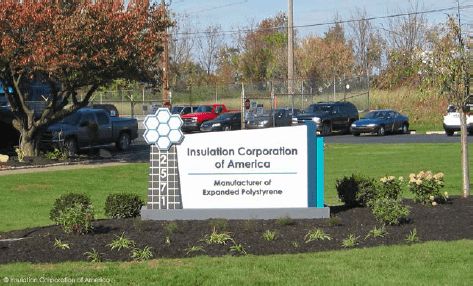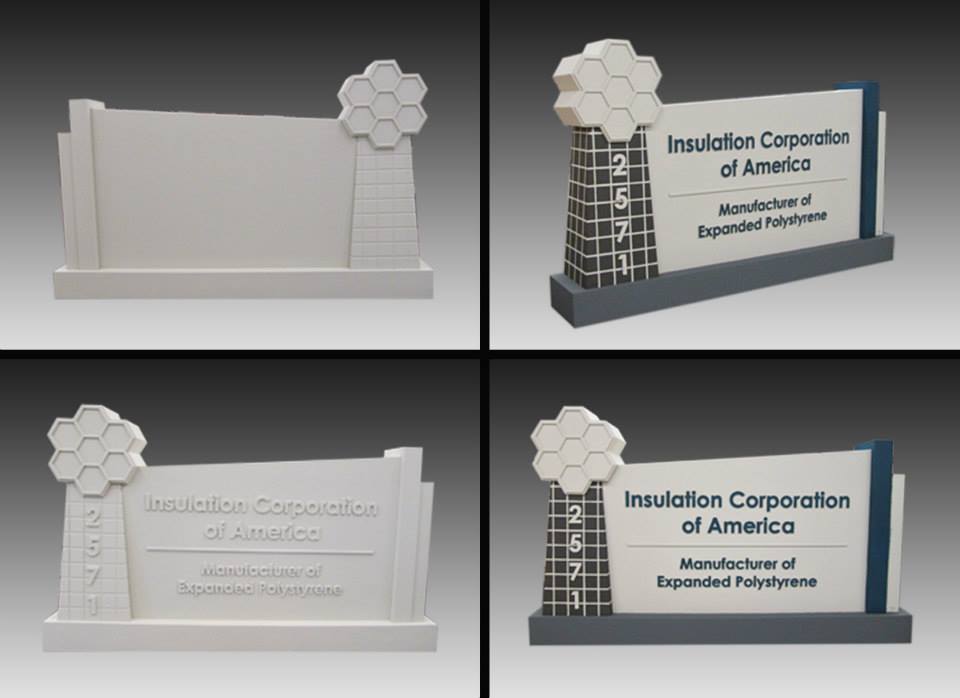

Expanded polystyrene is a simple product

| Install | Ordering | Quote |
InSoFast panels wouldn’t be nearly as effective and moisture resistant if they were not made from Expanded Polystyrene (EPS) Foam. This week on the blog the Insulation Corporation of America (ICA) will be taking us through the multi-step process of how EPS is manufactured, recycled and transformed into a variety of applications. Here’s your chance to learn why this versatile white material really is the Extraordinary Product Solution. ICA is a leading supplier of energy efficient and environmentally friendly EPS products. For further background on the company, be sure to check out last week’s blog interview with Sandy Posocco.
Expanded polystyrene is a simple product. The manufacturing process consists of two material components: raw beads and steam. That’s it. The beads, known as styrene beads, originate as an oily liquid byproduct of the petroleum industry. Rather than being run off as waste, the liquid form is processed to extract the oil and produce tiny, sand-like beads. When steam is added to the beads they expand to 40 times their original size, thus the name: expanded polystyrene. EPS is commonly but incorrectly referred to as Styrofoam™. However, Styrofoam™ is the Dow Chemical Company’s trade name for its brand of extruded, blue foam. It’s not clear how the Styrofoam Cup got its name, but it’s definitely not Styrofoam™.
After expansion, the beads need to rest in large silo bags before they are ready for the mold. Next the beads are taken to the mold where steam is added once again and blocks are formed. At ICA, one of the EPS blocks we produce is 16 ft, which weighs about 180-lbs. One bag of beads can produce about 11 of those blocks.

In terms of application, the blocks coming off of the mold can literally end up in one of a million different places. In block form, EPS can be used for a geotechnical application known as Geofoam. Geofoam is used as a soil substitute for stabilization, retaining walls, back fill, road embankments, and pavement insulation. It is only 1% the weight of soil and rock, but one truckload can fill the same volume of roughly eleven truckloads of dirt. Not only is Geofoam extremely easy to handle on the job site, it also provides a long-lasting, stable core for construction projects.
A large portion of our blocks end up with concrete-based customers. Opposites attract when it comes to concrete and EPS. The lightweight characteristics of expanded polystyrene joined together with the heavyweight strength of concrete to form a perfect union for both residential and commercial uses. Insulated Concrete Forms (ICFs), which combine the two, are used to build storm-proof housing, decks, industrial and commercial buildings. In construction, EPS is also used for insulation and roofing. It is available in various densities and thicknesses to achieve various R-values.

As a measurement of a substance’s ability to resist thermal transfer, R-value is a major topic concerning energy efficient design. Building codes are starting to require higher, more stable R-value and the claims of certain products are not holding up. Due to industry complaints, Polyiso was forced to retest their product and had to reduce their R-value claims. As an inert material, EPS R-values do not waiver. The white stuff holds up over time and does not retain moisture. In a 15-year independent study, expanded polystyrene (EPS) was proven to outperform extruded polystyrene (XPS). EPS is also less expensive than XPS, which is another reason why more and more contractors are turning to EPS for their construction needs.
Did you know that outdoor signs are often constructed from EPS? Driving down the street you may pass by what you think is a brick and mortar sign, but chances are that it is constructed from expanded polystyrene! In fact, ICA has worked with Peachtree City Foamcraft in Schnecksville, PA to create the custom sign located at the front of our office. You may have even noticed EPS used in floatation situations. EPS does not take on water, which makes it the perfect material for marine docks, surf boards, yachts, swimming pools, and even floating homes! Since EPS is lightweight and can be cut or molded to any shape, it’s uses are pretty endless. It’s versatile nature often allows it to take on some unusual forms. EPS is often used as a material for headrests by coroners and undertakers in the medical field. One could say Expanded Polystyrene goes into the hereafter.

Speaking of the hereafter, let’s talk about recycling. The long life characteristics of EPS foam make it a great application for Geofoam and many other products, but it is also recyclable! ICA recycles clean EPS from our customers and from the public. It is put through a grinder to chop it down to size before we route it back to the mold to mix with virgin product and make recycled blocks. The dust from the grinding process is also captured and made into cubes. Those cubes are sold and manufactured into various products, from picture frames to park benches. Sadly, the press is blanketing several products into one and making inaccurate statements. A great deal of the negative press about the white stuff not being recyclable is actually incorrect.

So here you have a material that starts out as a byproduct of the petroleum industry, gets mixed with mere steam, formed into all shorts of shapes and placed in all sorts of applications. This simple recyclable product has literally thousands of uses from holding up hillsides to insulating buildings and beyond. Is it any wonder we have tagged EPS as the Extraordinary Product Solution?
This report was brought to you by Insulation Corporation of America (ICA) a woman-owned manufacturer of expanded polystyrene (EPS), which is commonly, but mistakenly referred to as Styrofoam™. ICA is located in Allentown, PA and services the entire Mid-Atlantic Region from Virginia to Maine to Ohio. If you’re curious about the mold-making process of InSoFast panels, check out this short video clip.

